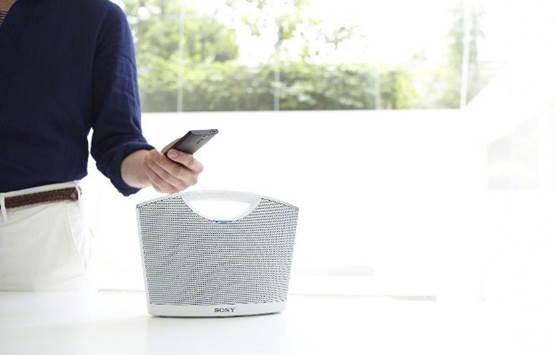Although they may seem alike in many ways,
the only noteworthy similarity between Bluetooth and NFC (Near Field
Communication) technologies is that they are both wireless in nature. Aside from
that, each technology is best suited for specific applications that leverage
their inherent strengths. For instance, Bluetooth is perfect for lengthy
interactions where two or more devices are connected for a long period of
time.
By contrast, NFC is a fit when only short
connections are required. The key to truly understanding the difference between
these two technologies and how they can be helpful in a variety of ways is to
take a look at their potential uses and determine whether or not a certain
feature is beneficial to you.

Bluetooth
& NFC
Bluetooth uses
Bluetooth has been around longer than NFC
and has undergone many changes over the years. Initially its primary use was
to pair a mobile phone with a wireless headset, and that usage has grown to
include the pairing of computers and even game consoles. Business travelers are
familiar with Bluetooth because it is used for the aforementioned wireless
headsets as well as for hands-free calling in certain situations. And as the
technology continues to evolve, more and more uses emerge.
Bluetooth is also showing up on different
types of consumer devices. Some digital cameras have Bluetooth built-in so you
can instantly send a photo to a smartphone or to your computer without having
to plug in a cable. And some televisions, Blu-ray players, and other devices
allow you to use your phone as a remote control. As we mentioned, Bluetooth is
a better fit for long-standing connections and with each new generation, the
technology is becoming much more reliable and suitable for a variety of new
applications.

Bluetooth
has been around longer than NFC and has undergone many changes over the years.
NFC uses
Whereas Bluetooth is more commonly used for
long-term connections, NFC is more often used for fast data transfers and other
quick share situations. NFC enables you to either touch two NFC capable devices
together or bring them into close proximity with each other to share photos,
videos, and other files almost instantly.

Whereas
Bluetooth is more commonly used for long-term connections, NFC is more often
used for fast data transfers and other quick share situations.
But the technology goes way beyond sharing
multimedia and could revolutionize the way people use their phones in everyday
situations.
You may have seen advertisements for
applications where you can use your phone to pay for items at gas stations,
department stores, and other locations. These types of instant payments use NFC
technology to turn your smartphone or other device into a mobile wallet. You
can, for instance, store credit card information on your smartphone and swipe
your phone past a terminal to pay for products or services. Additionally, with
many of these applications, you can keep receipts and other information stored
on your smartphone or tablet or send them via email, which can be a perfect
solution for frequent business travelers as well as anyone who interested in
going paperless.
NFC can also be used as an identification
tool, similar to the keycard you
might use to gain entry to a secure room or building. But perhaps one the most
intriguing uses of NFC for companies could be interacting with customers at
trade shows or other events via NFC enabled devices.
Imagine being able to have potential
customers swipe their phone next to a terminal and choose to instantly share
their contact information, helping you build a stronger database. You could
also use such terminals to share advertisements, product facts, coupon codes,
and other information that could help drive sales of your products in stores.
NFC remains a relatively new technology and
many companies are still sorting out how to apply it to traditional business
practices. But as you can see, NFC holds significant potential and is already
showing how it can make sales situations essentially stress free for the
customer.
Using them together
In some situations, NFC technology can
actually improve Bluetooth functionality. For instance, some companies use NFC
connections to help set up Bluetooth connections quickly. Instead of searching
for a Bluetooth connection or holding down a button for a long period of time,
you can initiate an NFC connection with little effort and pair devices almost
instantly.
It isn't clear whether or not NFC will
eventually replace Bluetooth altogether, but for now each technology clearly
has its own benefits for users to take advantage of. For long-term device
pairing, Bluetooth is the way to go. For instant data transfers, NFC is easy
and convenient. And because newer smartphones are starting to come with these
technologies built-in, companies and consumers won't have to choose between
them, but instead be able to take advantage of every benefit that both
Bluetooth and NFC have to offer.
NFC-based payments on the rise
According to a report from the Pew Research
Center and Elon University, 65% of the 1,021 “technology stakeholders and
critics” surveyed agree that mobile wallet usage will become “commonplace by
2020.”
We are already at the point where debit
cards, credit cards, and other forms of payment are used much more often than
cash, but this report says that in less than eight years, NFC-based mobile
payments may even outpace those alternatives or replace them altogether.
There are still a few hurdles to overcome
with NFC related to potential security issues and the reluctance of some users
to go fully digital. But if you, as a consumer or as a business executive,
aren’t looking into the many possibilities of NFC, it might be time to start
researching it because it appears that NFC is here to stay.